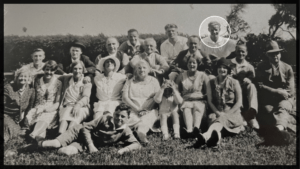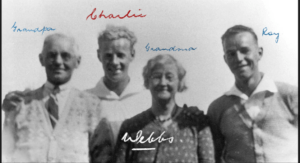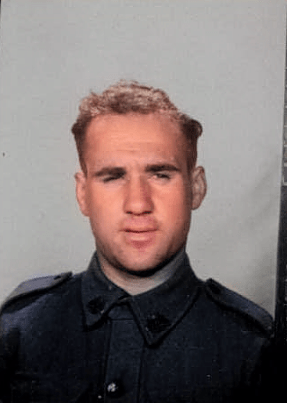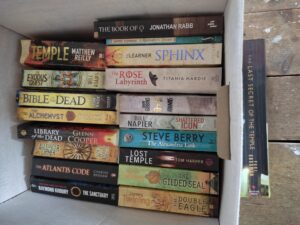Trying to work out what happened to Dorothy Jean “Doff” Webb (nee Robertson), I was told a few weeks back that after getting divorced (in absentia) from Carl Webb, Doff’s subsequent partner was Kevin D’Arcy. However, even though I can see that a Kevin Alexander D’Arcy is included in various private family trees online, nobody has so far written down much about him.
So here’s my attempt to put that (at least partially) right.
Kevin Alexander D’Arcy Family Tree
I started with some of the information suggested by commenter Belinda here. It didn’t take too long to find William “Billy” D’Arcy (b. 1893 Ballarat, died 1987 Bacchus Marsh) and his wife Florence (“Flora”) Jane D’Arcy (nee McKay) (b. 1899 Warrion, died 1986 Bacchus Marsh) and their son Kevin Alexander D’Arcy (b. 4 May 1923 Melbourne, d. 21 May 1991, “Rtd Taxation Officer” in the probate record).
In the electoral rolls, we can see Kevin’s parents living in Bacchus Marsh (1949, 1954, 1958, 1963, 1967, 1972, 1977, 1980), with Kevin appearing on the rolls only in 1977 and 1980. There’s also a James Allen D’Arcy (“valuer”) who appears there in the 1960s. One family tree asserts that they had five children (but no names, no evidence).
Kevin Alexander D’Arcy Military Records
What I found interesting was that Private Kevin Alexander D’Arcy (clerk, single, enlisted 1943, VX142120, 37/52 Australian Infantry Battalion, discharged 27 Aug 1946, 5ft 5in, blue eyes, medium complexion, light brown hair, no marks or scars) was marked up as living in Boort, Victoria in 1943 with his father W. D’Arcy.
Note that the correspondence in the file lists various other addresses:
- 1946, 3 Kembla St, Hawthorn
- 1953: 62 Coppin St, Richmond
- 1971: 49 Keith St, Alphington 3078
Could it be that the mention of “Bute” was merely ‘Chinese Whispers’, and the place we should have been looking at was actually Boort, waaaay inland in Victoria, near Lake Boort, in the vaguely Tolkienesque shire of Loddon? What on earth has ever happened in Boort? I mean, I’m every bit as big a fan of “gourmet green tomatoes” (apparently Boort’s most famous product) as the next man (…if the next man doesn’t happen to like them very much).
And indeed, if you look at the electoral rolls for Boort in 1942, you see William “Darey” (public servant) and Flora Jane “Darey” (i.e. both misspelled!), S.R.W.S. Res., Holloway St, Boort. (But they’re in neither the 1937 nor 1949 electoral rolls for Boort.) So this whole sequence does seem to be basically correct.
But what about prior to 1943? If you search Trove for “Billy D’Arcy”, you’ll find (ignoring the lightweight boxer of the same name!) a 03 Sep 1932 Bacchus Marsh Express column called “Melton As Coursing Centre”, which mentions Billy D’Arcy.
If you further search the two Bacchus Marsh papers in Trove for “D’Arcy”, you’ll see a 28 Feb 1953 engagement of Doreen Elizabeth, eldest daughter of Mr & Mrs W. D’Arcy of Maddingley, to Andrew Connell. There’s also the 1952 marriage of Joan D’Arcy (younger daughter of Mr & Mrs W. D’Arcy) to Mr Raymond Marett.







